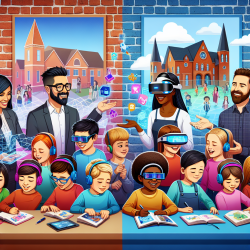What is Video Modeling (VM)?
Video Modeling (VM) is a teaching method where students watch a video of a model performing a task and are then instructed to replicate the behavior. This technique has been shown to be highly effective for various skills, including academic, social, and daily living tasks.Research Findings
The study evaluated VM's effectiveness in increasing the duration of face-covering behavior (FCB) in three students with Down syndrome (DS). The results were promising:- Two students significantly increased their FCB duration using VM alone.
- The third student required additional behavior-specific praise (BSP) to achieve similar results.
Implementation Steps for Practitioners
To implement VM effectively in your school setting, follow these steps:- Create the Video: Develop a video that demonstrates the desired behavior. Ensure the video is clear, concise, and free of distracting elements.
- Introduce VM: Have students watch the video before engaging in the task. Use a laptop or tablet for easy viewing.
- Monitor and Record: Observe and record the duration of the desired behavior. Use tools like a lap-timer to ensure accuracy.
- Provide Feedback: If necessary, incorporate BSP to reinforce the behavior. Praise should be specific and related to the task.
Why VM Works
VM offers several advantages:- Cost-Effective: Once the video is created, it can be reused multiple times, reducing costs.
- Non-Disruptive: VM can be easily integrated into daily routines without significant disruption.
- Remote Learning Compatible: VM can be used during remote instruction, making it versatile.
Encouraging Further Research
While this study shows VM's effectiveness in increasing FCB, further research is needed to explore its applications for other preventive behaviors, such as handwashing and physical distancing. Practitioners are encouraged to conduct their own studies and share their findings to contribute to this growing field.Conclusion
VM is a powerful tool that can help educators improve safety behaviors in students with DS. By implementing VM, schools can ensure a safer return to in-person instruction and better protect vulnerable populations.To read the original research paper, please follow this link: Using Video Modeling to Increase Face-Covering Behavior for Individuals with Down Syndrome in the School Setting.










